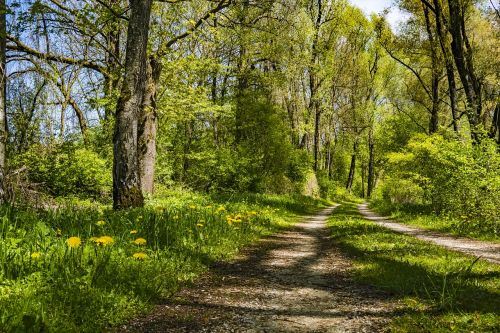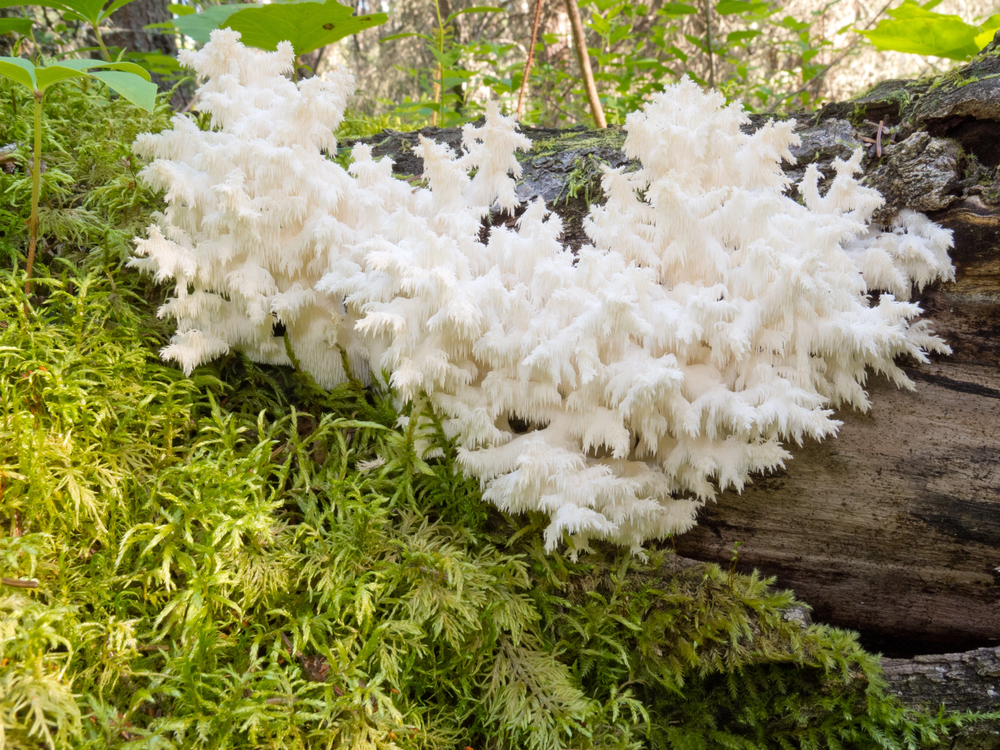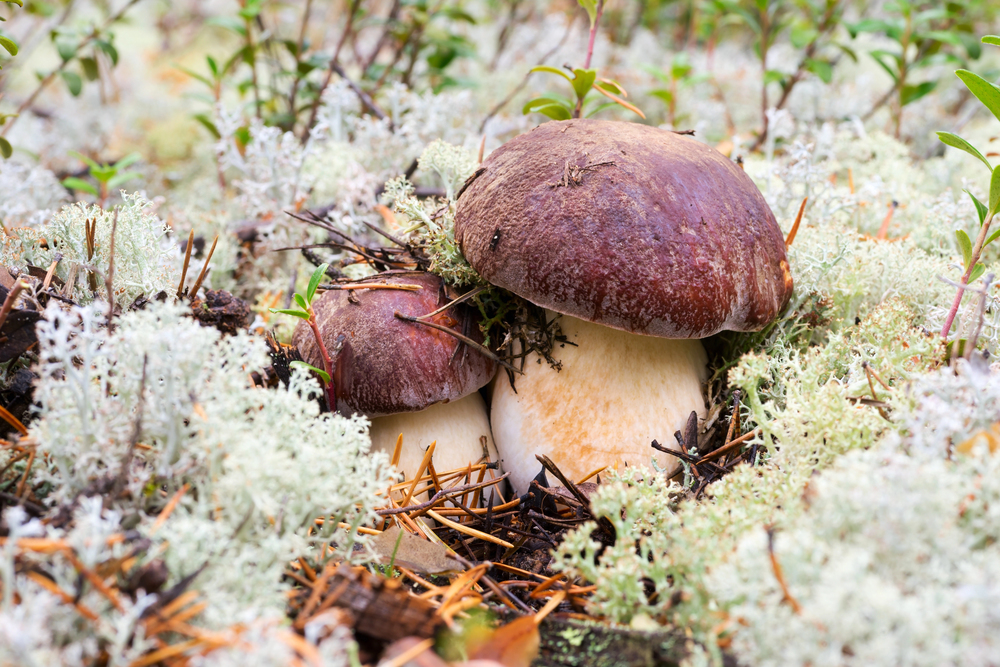Identifying wild chanterelles demands a precise understanding of their distinctive characteristics, as mistaking these prized edible mushrooms for toxic look-alikes can lead to serious consequences. While experienced foragers often recognize chanterelles at a glance, novice mushroom hunters must carefully examine multiple features to guarantee accurate identification. From the signature false gills to the unmistakable apricot aroma, each characteristic serves as a critical checkpoint in the verification process. Understanding these key features not only guarantees safety but likewise opens the door to one of nature’s most sought-after culinary treasures.
Key Takeaways
- True chanterelles have blunt, forked ridges (false gills) that run down the stem, unlike the separate knife-like gills of look-alikes.
- The cap is funnel-shaped with wavy edges, typically golden yellow to orange, measuring 2-10 cm in diameter.
- A distinctive fruity, apricot-like aroma helps confirm identification of true chanterelles.
- The flesh is solid, meaty, and creamy-white throughout, never hollow or fibrous.
- Chanterelles grow directly from the ground near hardwood trees, particularly oak, maple, and birch, during summer and fall.
Physical Appearance
How can one identify a true chanterelle mushroom? The most distinctive physical characteristics include its size, ranging from 2-4 inches in height and 1-4 inches in width, along with its vibrant coloring that spans from light yellow to dark golden yellow-orange, with variations including red, orange, creamy white, purplish, and black specimens. A unique feature of true chanterelles is their sweet apricot aroma.
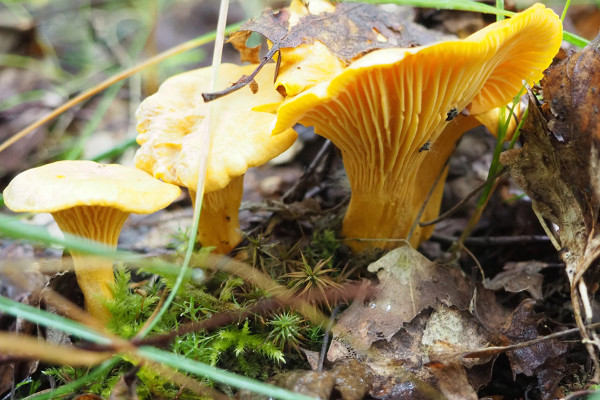
The mushroom’s cap structure undergoes a notable transformation as it matures, beginning as a flat surface before developing into a distinctive funnel shape with a central depression. Young chanterelles often appear as small golden buttons dotting the forest floor, while some maintain their flat or slightly rounded cap formation throughout development.
The stem exhibits several identifying features that are essential for proper identification. It maintains a solid, fleshy interior rather than being hollow, and displays the same coloration as the cap without any rings or distinctive markings. The stem’s base typically shows a lighter coloration, and its structure seamlessly integrates with the cap in a smooth, continuous formation.
False Gills and Cap Structure
One of the most reliable ways to identify true Chanterelles is by examining their distinctive false gills, which appear as forked ridges rather than the separate, knife-like gills found in most mushrooms. The false gills merge seamlessly with both cap and stem, creating thick, blunt ridges that branch and run down the stalk in a pattern that becomes more pronounced as the mushroom matures. These characteristics stand in marked contrast to the true gills of common look-alikes, such as the Jack O’Lantern mushroom, which displays thin, distinct gill structures that can be individually separated from the cap. They typically exhibit a golden yellow color and are most commonly found growing near oak, beech, and birch trees in broad-leaved woodlands.
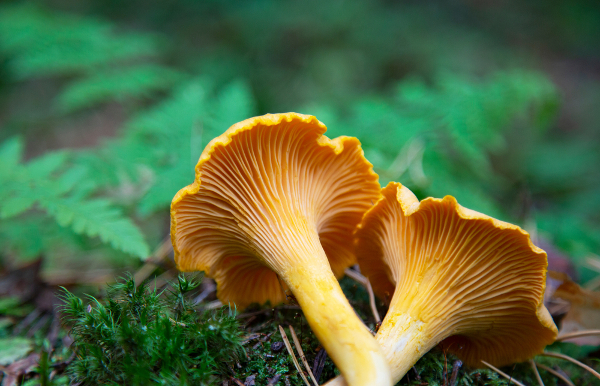
Ridges Versus True Gills
A vital distinguishing feature between true chanterelles and their false counterparts lies in their underside structures. True chanterelles display distinctive fork-like ridges that extend down the stem, appearing as thick, irregular formations with characteristic squiggles and intermittent patterns, typically sharing the golden-yellow to pale orange coloration of the cap.
False chanterelles, on the other hand, possess true gills that present as thin, blade-like structures radiating from the stem in a more uniform pattern. These gills are especially closer together than chanterelle ridges and exhibit a brighter orange-yellow coloration that often contrasts with the cap’s shade. A noticeable fruity aroma helps distinguish true chanterelles from their false lookalikes.
One essential identification method involves testing the attachment of these structures. Chanterelle ridges are structurally integrated with the cap and resist separation, while the gills of false chanterelles can be easily removed with gentle pressure from a finger.
When foraging, carefully examine the underside features and consider additional identifying characteristics, such as growth location and cap texture. True chanterelles exclusively grow from soil, never from wood, and lack the fine down present on false chanterelle caps.
Age-Related Cap Changes
Understanding a chanterelle’s age-related changes helps foragers make informed identification decisions beyond just examining the gill structure. The cap undergoes several distinct transformations during its 44-day average growth period, with the funnel shape becoming more pronounced as the mushroom matures.
Young chanterelles display smooth, funnel-shaped caps ranging from 2 to 10 centimeters in diameter, with characteristically ruffled edges that never roll inward. As the mushroom develops, its golden yellow to pale orange coloring often intensifies, while the cap’s distinctive wavy texture becomes more prominent. The true gills are absent, making them easily distinguishable from their toxic look-alikes.
The false gills exhibit notable changes throughout maturation, developing more defined branching patterns and increasingly prominent cross-hatched wrinkles. These ridges remain firmly attached to both cap and stem, maintaining their thick, rounded edges throughout development.
Environmental conditions significantly influence cap development, with wet, warm summers promoting ideal growth. The cap’s size and growth rate vary based on climate conditions and the health of its mycorrhizal tree partner, though the distinctive ruffled edge remains constant regardless of age or growing conditions.
Forked Pattern Analysis
Reliable identification of chanterelles fundamentally depends on examining their distinctive forked ridges, which differ markedly from true gills found in other mushroom species. These ridges feature blunt edges and wide spacing, extending down the stem in a decurrent pattern that gradually tapers rather than ending abruptly.
The forked pattern creates a network of raised lines on the mushroom’s underside, maintaining a color similar to or slightly paler than the cap surface. Unlike the thin, blade-like gills of false chanterelles, these ridges cannot be easily scraped off or separated from the cap’s flesh. A fruity, apricot-like aroma helps confirm proper identification of true chanterelles.
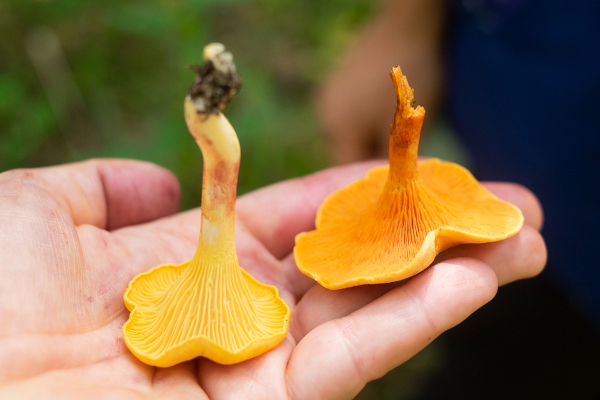
When examining the cap structure, look for a smooth, funnel-shaped or vase-like form with wavy, irregular edges. The surface ranges from vibrant golden-yellow to pale orange, lacking the velvety texture characteristic of false chanterelles.
To confirm identification, observe how the ridges connect to the stem. True chanterelles display an integrated pattern where ridges flow seamlessly down the stalk, while false chanterelles exhibit distinct gills that attach separately to the stem and often end abruptly. The stem itself should lack any bulbous base or ring structure.
Growth Patterns and Location
The distinctive chanterelle mushroom thrives in diverse forest environments, particularly favoring hardwood forests with oak, maple, poplar, and birch trees. These prized fungi establish vital mycorrhizal relationships with their host trees, forming intricate underground networks that benefit both species through nutrient exchange.
Chanterelles demonstrate specific growth preferences that help foragers locate them in natural settings:
- Found near water sources, including streams and wetlands, where humidity levels remain consistently high
- Grow solitarily or in small groups on the forest floor, never directly on wood or stumps
- Often appear along disturbed areas such as path edges and forest boundaries
- Prefer areas with ground cover like moss, grass, or low-growing herbs that help retain humidity
The mushrooms exhibit relatively slow growth rates of 2-5 centimeters per month, persisting for approximately 44 days. Their fruiting season typically spans from July through September in most regions, though this can extend into November or December depending on local climate conditions and geographical location. The specific timing and abundance of chanterelles depend heavily on environmental factors, including soil conditions and the health of their mycorrhizal tree partners. The ideal harvesting conditions occur when heavy rain and humidity combine to promote robust mushroom development.
Color and Flesh Properties
Accurate identification of chanterelles begins with recognizing their distinctive color variations and flesh characteristics. The mushroom’s cap displays a spectrum of hues ranging from bright yellow to deep red, with some specimens showing rare white or black coloration. Regional variations include species like C. tabernensis, which exhibits a characteristic yellow tone that gradually lightens toward the stipe base. When gathering chanterelles, professional guidance is strongly recommended for beginners to ensure safe foraging practices.
The flesh of genuine chanterelles reveals important identifying features that distinguish them from false varieties. True chanterelles possess thick, meaty flesh that maintains a consistent pale creamy-white color beneath the surface, contrasting with their vibrant exterior. When producing a spore print, authentic specimens will yield white to creamy-colored results.
Key structural elements include the distinctive false gills, which appear as blunt, forked ridges running down the stem rather than true gills. These ridges remain intact when scratched, unlike the thin, deep gills found on false chanterelles. The cap itself typically measures between 1 to 5 inches across, featuring wavy, irregular edges that create the characteristic funnel shape, while the stipe maintains a solid, non-hollow interior.
Distinctive Aroma and Texture
Distinguishing true chanterelles stands out as a sensory experience, marked by their signature fruity, apricot-like aroma and firm, meaty texture. This distinctive fragrance sets them apart from false chanterelles, which possess a more typical mushroom smell commonly found in grocery stores. Wild foraging remains the primary sourcing method since these mushrooms cannot be cultivated commercially.
The texture of true chanterelles provides vital identification markers, featuring solid stems and flesh that maintains its integrity when handled. Their meaty consistency and silky texture create an appealing mouthfeel, while the non-crumbly nature distinguishes them from other similar-looking species.
Key sensory characteristics include:
- Fresh, seasonal fragrance that diminishes with age
- Firm, chewy texture that remains consistent through cooking
- ethereal, woodland flavor profile with fruity undertones
- Thick, blunt ridges that run continuously down the stem
These mushrooms deliver substantial nutritional benefits, containing beta carotene, vitamins D and B, and fundamental minerals like potassium, copper, and selenium. The intensity of both aroma and texture varies with the mushroom’s age and size, providing natural indicators of freshness and ideal harvesting time. Experienced foragers rely on these distinct sensory qualities for accurate identification in the field.
Testing and Verification Methods
Safe identification of chanterelles requires multiple testing and verification methods to definitively separate them from dangerous look-alikes. Through systematic testing and careful observation, foragers can confirm key identifying characteristics that distinguish true chanterelles from toxic imposters.
The verification process begins with morphological examination, followed by practical tests that evaluate specific features. When examining a suspected chanterelle, conduct these crucial tests:
- Perform the gill scrape test – false gills should remain firmly attached and not separate from the cap
- Cut the stem lengthwise to verify solid, white to creamy white flesh throughout
- Check for the distinctive fruity aroma, similar to apricots or fresh pumpkin
- Create a spore print, which should be pale cream in color
Physical examination must include close inspection of the cap’s funnel shape, decurrent false gills, and continuous stem structure. The mushroom’s firm texture and solid construction provide additional confirmation points. While these tests offer strong evidence for identification, always cross-reference findings with reliable guidebooks and consider consulting experienced foragers before consumption. A clear sign of a toxic jack-o’-lantern mushroom is its bright orange stem color, which differs from the white interior of true chanterelles.

